Summer Reading: 10 Great Books on Marketing

Summer draws closer and as temperatures climb and dress codes relax, all those books steadily accumulating cobwebs on your shelves start to get a second glance.
If you’re an aspiring MBA, here are 10 essential books on marketing you probably forgot you already picked up. If you haven’t, now’s your chance to make the most of the next 12 weeks of beach reading!
10 Awesome Books on Marketing
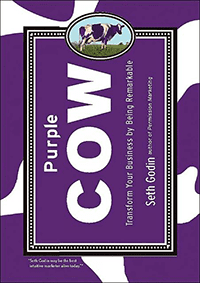
Entrepreneur, marketing guru, and Stanford MBA Seth Godin published this landmark 2003 text on foregoing the riff-raff of creative marketing in favor of building marketing strategies directly into unique products, so they can essentially sell themselves.
Here’s an excerpt from the book published on Fast Company: “The essence of The Purple Cow — the reason it would shine among a crowd of perfectly competent, even undeniably excellent cows — is that it would be remarkable. The world is full of boring stuff — brown cows — which is why so few people pay attention. [It’s about] understanding from the outset that if your offering itself isn’t remarkable, then it’s invisible — no matter how much you spend on well-crafted advertising.

Contagious: How to Build Word of Mouth in the Digital Age by Jonah Berger
It’s no surprise that Associate Professor of Marketing at Wharton and Stanford PhD Jonah Berger’s book about going viral in fact went viral when it dropped in early 2013 – Contagious quickly became a New York Times Bestseller.
According to its press release, “Contagious reveals the secret science behind word-of-mouth and social transmission. If you’ve wondered why certain stories get shared, e-mails get forwarded, or videos go viral, Contagious explains why, and shows how to leverage these concepts to craft contagious content.”
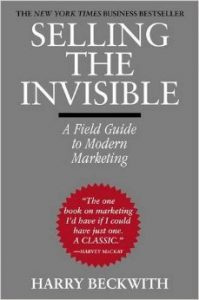
Selling the Invisible by Harry Beckwith
This 1997 book by Minneapolis “mad man” Harry Beckwith offers definitive insight into how the service sector—hospitality, travel, and telecommunications—fundamentally transformed how both tangible and intangible products are sold. Beckwith’s premise is surprisingly simple: improve the service and customers will follow.
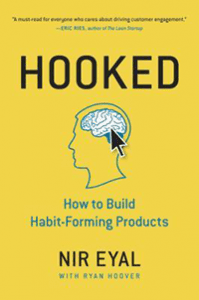
Hooked: How to Build Habit-Forming Products by Nir Eyal
It’s fitting that behavior design consultant and Stanford MBA Nir Eyal wrote “Hooked”—a treatise that Forbes describes as an instructional manual for “converting the ‘external triggers’ that make a person engage with a product into “internal triggers” that bring that person back to it again and again”—after a long stint in the video game industry. You may never look at Candy Crush the same way again.
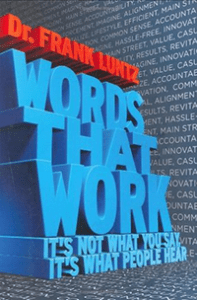
Words That Work: It’s Not What You Say, It’s What People Hear by Frank Luntz
Republican politico, Fox News contributor, former Penn professor, and image management consultant, the Atlantic described Frank Luntz as a “public opinion guru.” Luntz’s 2008 book is a how-to guide for crafting effective messages for target audiences.
The Wall Street Journal wrote in its review, “’Words that work’ turn out to be portals for clients to think hard about what they and their opponents stand for and how to align their positions more closely with what their audiences actually care about.”
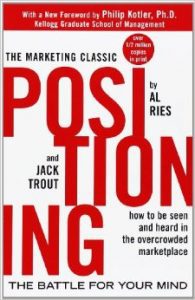
Positioning: The Battle for your Mind by Al Ries and Jack Trout
“Father of Brand Positioning” Al Ries co-wrote this influential 1981 book with Jack Trout in an effort to address an increasingly media-saturated audience. To say the wisdom contained within the book is prescient is an understatement. “Positioning,” according to its press release, “shows you how to: 1) Use leading ad agency techniques to capture the biggest market share and become a household name; 2) Build your strategy around your competition’s weaknesses; 3) Reposition a strong competitor and create a weak spot; 4) Use your present position to its best advantage; 5) Choose the best name for your product; 6) Determine when-and why-less is more; and 7) Analyze recent trends that affect your positioning.”
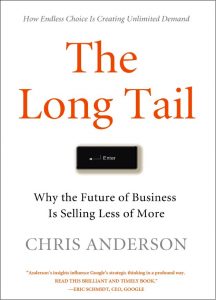
The Long Tail: Why the Future of Business is Selling Less of More by Chris Anderson
Wired editor-in-chief and former physicist Chris Anderson published this 2006 book on cultural atomization to much fanfare. Anderson’s theory of the Long Tail, according to the book’s dedicated page, relates to a cultural and economic shift in which the focus has moved toward “a huge number of niches in the tail” rather than a “relatively small number of ‘hits’ at the head of the demand curve.”
The most pressing example is “the theory’s prediction that demand for products not available in traditional bricks and mortar stores is potentially as big as for those that are.”
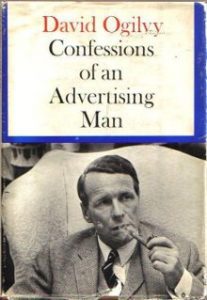
Confessions of an Advertising Man by David Ogilvy
In 1962, Time called British “mad man” David Ogilvy “the most sought-after wizard in today’s advertising industry.” The following year, Ogilvy published this international bestseller, which “covers advertising, people management, corporate ethics, and office politics” in a manner that very much rings true 53 years later.
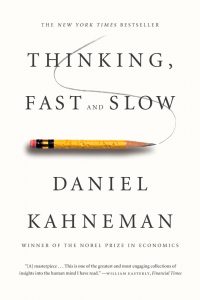
Thinking Fast and Slow by Daniel Kahneman
Behavioral psychologist and Nobel prize winner in Economics Daniel Kahneman exposed “the two systems that drive the way we think: System 1 is fast, intuitive, and emotional; System 2 is slower, more deliberate, and more logical” in this 2011 modern-day classic. Kahneman’s work on heuristics and biases “reveals where we can and cannot trust our intuitions and how we can tap into the benefits of slow thinking.”
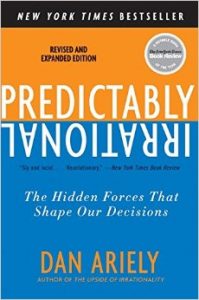
Predictably Irrational by Dan Ariely
Kahneman protégé and PhD in Business Administration from Duke’s Fuqua School of Business Dan Ariely published this insightful companion piece a few years before “Thinking Fast and Slow.” The New York Times bestseller posits that we “consistently overpay, underestimate, and procrastinate” in ways that are “systematic and predictable—making us predictably irrational.”
